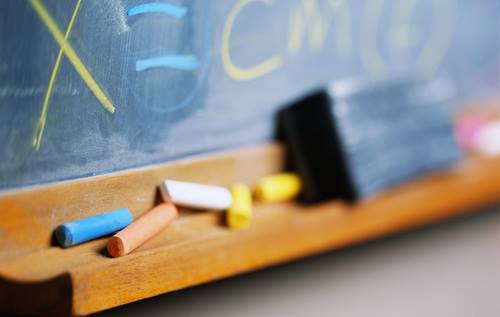[As an aside: I also had to look up an old Ann Arbor News article on microfilm today. It really made me miss the (old) Ann Arbor News--the article was from the mid-1980s, and although there was a story-telling aspect to the article, it was also very information-dense, which is another thing I don't see a lot of these days in most journalism outlets.]
In any case--back to my main point here. Askins writes,
The lab manual for my first course in high school chemistry was called “Merrill Laboratory Chemistry,” co-authored by my teacher, David Haines. As I recall it, the first laboratory experiment involved lighting a candle and then watching it burn for an entire class period. The laboratory task was to record in the lab manual just what we saw happening.Dave's point, that we often analyze when we should perhaps describe, reminded me of a college friend who is an artist now. Like me, she was an environmental studies major. At the time of the discussion I'm going to tell you about, she was experimenting with her art, but she was making a living as a middle school science teacher at a Friends' (Quaker) school in Philadelphia.
That was a quintessentially descriptive task. And it’s not as easy as you might think, once you grasp what’s meant by “description” in this context.
For example, here’s the effort of a hypothetical student at this descriptive task:
Candle is burning.I think it’s a poor effort. It’s not a poor effort by dint of a lack of detail. It’s a poor effort because it uses words that are already analytical, instead of purely descriptive. A possible commentary on that “description”:
Burning candle, wax is starting to melt.
Liquid wax is dripping down the sides of the burning candle.
Candle is getting shorter.
Flame is flickering.
You’ve used this word, “burning.” What do you mean by that? Do you mean to be talking about phlogiston leaving the candle? Or do you mean to be referring to a chemical reaction involving oxygen? Do you really mean to be describing the three-dimensional orangish, yellowish area above the white cylinder that’s shaped roughly like a teardrop and that moves around a bit?
Or take these words “melt” and “liquid.” What’s that exactly? Why are you convinced that the translucent stuff you’re seeing at the top of the white cylinder that tends to move around a bit is made of the same stuff the white cylinder is made of? Is that something you can see? Or have you already analyzed this situation, because you think you know what’s going on? What if that translucent stuff is being created by the orangish area out of some stuff in the air and deposited there on top of the white cylinder?
One day we were discussing teaching methods, and Bonnie told me that her students spent a lot of time drawing. She would place an object--a shell, a piece of wood, a stone--on each table, and her students would draw. I was surprised, but she said, "Most of these students don't spend very much time looking at things and thinking about what they really look like." In fact, drawing really is a good way to observe, and observation really is a building block for good science. Therefore, encouraging observation--real, finely detailed observation--should be foundational to science education. Is it?

No comments:
Post a Comment